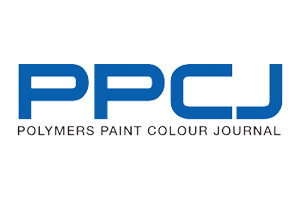
Following some difficult years in the adhesives and sealants industry, FEICA’s conference in Valencia, Spain, rose to the challenge and surpassed expectations, as Sue Tyler reports
As we are all too aware, the past few years have been more than unsettling for all industries and the adhesives and sealants market was no exception. Until now. FEICA’s European Adhesives & Sealants Conference, held in Valencia, Spain from September 15-16, was probably the best attended ever, with a record number of attendees.
As out going president William Barclay said during his opening speech: "What a fantastic turnout, over 350 people here, which qualifies as a success”. Mr Barclay’s successor, who has taken over the reins as president of FEICA, is Ramon Bacardit of Henkel.
Spoilt for choice
The two days of presentations covered a myriad of pertinent topics, with of course, uppermost, the market outlooks for not just Europe but North America and Asia too.
Norbert Walter, a former chief economist of Deutsche Bank started the day’s session off, talking about Europe as having been left behind in a world which has moved forward by emerging markets. It is not just the Euro Europe, which is suffering but other countries, such as the USA and Japan, which are struggling to get out of the economic mire. It is the emerging markets, particularly Asia and probably Latin America, that are providing the momentum to keep the global economy ticking over. Walter said that "emerging markets are the markets of the future for the next five years for sure”.
The present and future state of raw material supply was the topic shared by Tom Brewer of TA Brewer Consulting. As the global chemical industry goes through so many changes, some anticipated and some not, Tom Brewer discussed the implications of these changes on major raw material supply on a global basis as well as regional. The Middle East produces polyethylene but does not use the capacity. The lack of investment needs to be addressed to ensure growth in the future.
Market outlooks for Europe and North America and Asia Pacific were highlighted by Monique von Dungen, CHEM Research and Dave Nick, DPNA International, respectively.
In their presentation, the speakers commented on the global market providing three distinct sectors: Market recovery in 2010 brought the global demand above the 2007 level; Global demand expected to average 3.2% annually between 2010 and 2013; and the regional markets are growing at different rates with the emerging markets experiencing growth rates 4%< and the industrialised markets <3%.
The Top 10 global adhesives & sealants formulators had a 2010 sales market value in the region of E30bn, with a 45% share of the market.
Dave Nick also touched on BRICS, which is developing into a formalised economic alliance and destined to become an economic power within the next 15 years. BRICS share of the world adhesive demand in 2010 was 24% with the rest of the world sharing the remaining 76%.
Monique von Dungen spoke on the European market growth between 2010-2013, where there would be a moderate growth in EU 15+ and more sustained growth anticipated in the CEE-MENA area. Major driving forces in the CEE-MENA regions are economic growth and industrial development, which continue in many countries – GDP growth forecast 2010‐2011 at 4%<; Disposable income continues to increase; Rising costs (raw materials, energy, labour) and inflation control. Further information on the North American and Asia Pacific markets can be found in the ASC Adhesive & Sealant Market Reports, which are available via www.ascouncil.org /news/reports/ marketreport11.cfm. flexible binding
Melanie Roessing, Marketing Manager TEGOPAC, Consumer Specialties, Evonik Goldschmidt GmbH began the afternoon session on market and technology innovation by asking the question: How to create innovative solutions for sealants and adhesives?
Tegopac is a silane-modified binder for flexible adhesives and sealants, with features such as moisture curing at ambient temperatures; variable design of polymer backbone, eg molecular weight or polarity and variable number of position of silane groups, releasing ethanol.
Tegopac can be used in various applications from construction, automotive and assembly to transportation and flooring, meeting different markets with different needs. The market requirement for such bonds include high strength but still elastic products; fast curing products for fast assembly; high quality and reliable products for sustainable bonds; and green, toxicological benign products.
With parallel sessions taking place during the first day, one was spoilt for choice at which presentation to sit in on. The high calibre of speaker made the decision very difficult, when the companies taking part were the likes of Huntsman, Vinavil, Henkel, Dynasol, Momentive and Omya in the market and technology innovation session and Dow Corning, The Adhesives and Sealant Council and other learned bodies taking to the platform in the Legislation Track.
Labelling issues
Fabio Chiozza, Adhesives and Textile Department Manager, Vinavil SpA provided a comprehensive insight into the use of solid vinyl acetate copolymers as iced water resistance improver of water-based labelling adhesives. Labels appear on beverage cans, bottles made of glass, plastic and metal and water-based adhesives used for these items require high adhesion to the substrate, rheological behaviour/ high wet tack, resistance to iced water, good resistance to condensed water and removability in alkaline conditions.
To avoid the use of casein, Vinavil developed an alkali soluble vinyl acetate/crotonic acid copolymer in beads form as an adhesion promoter. This additive avoids the yellowing and smell often arising by keeping the adhesion properties that the acrylic copolymers have on glass and plastic, even in humid and icy conditions.
Henkel’s Dr Hans-Georg Kinzelmann, Corporate Director, Adhesive Technologies R&D Polyurethanes spoke on low monomer isocyanate polyurethane adhesives to highlight the importance of isocyanate reduction; ways to reduce diphenylmethan-diisocyanate (MDI) monomer concentration in PU hotmelts and foams and alternative technologies to reduce MDI monomer concentration in liquid PU resins. Since December 1, 2010, all products containing >1% MDI have to carry an additional warning sentence (R40) in Europe.
To reduce isocyanate emission it is necessary to replace MDI with a less volatile diisocyanate. The introduction and use of MicroEmission reactive PU-hotmelts reduced emission rate to one tenth. Significantly improved technical standard in occupational safety has been fully confirmed by institutes and accident prevention and insurance associations. Comparison between conventional PU assembly foam and the new PU assembly foam provided benefits such as R40 labelling not necessary, requires less moisture for curing, reduced risk of foam collapse and finer cell structure.
Spanish market session
This year a dedicated Spanish speaking session was held to discuss the country’s market, including raw material sourcing; creating customer value with Bio thermoplastic polyurethanes and an introduction to the services provided by ASEFCA, the Spanish Adhesive & Sealant Association.
Business Forum/Panel Discussion
As in previous years, the last day provided a lively debate in the panel discussion, following the presentation by Aránzazu del Campo, Independent Research Group Leader ‘Active Surfaces and Materials’, Max Planck Institute for Polymer Research on the reduction to practice of bio-inspired adhesives: A COST Working Group for the dialogue between industry and academia.
www.polymerspaintcolourjournal.com/news/adhesives




